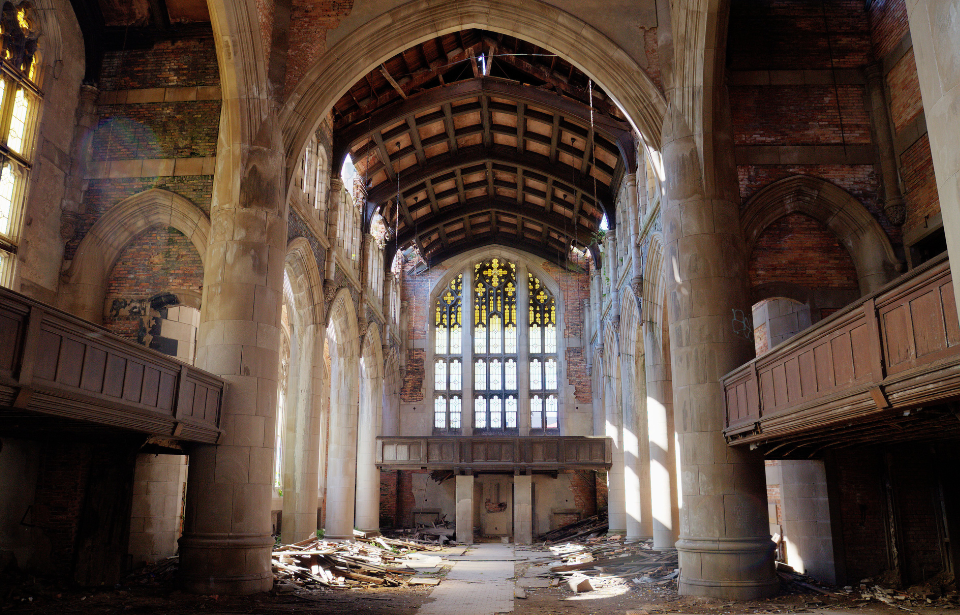In the heart of Gary, Indiana, stands the hauntingly beautiful City Methodist Church, a gothic ruin that tells the tale of a once-thriving community brought low by the collapse of the steel industry. This stunning structure, now a favorite among urban explorers and filmmakers, is a symbol of the city’s industrial past and its ongoing efforts at revitalization. The City Methodist Church is more than just a decaying building; it is a symbol of the rise and fall of Gary itself.
A grand beginning in 1926
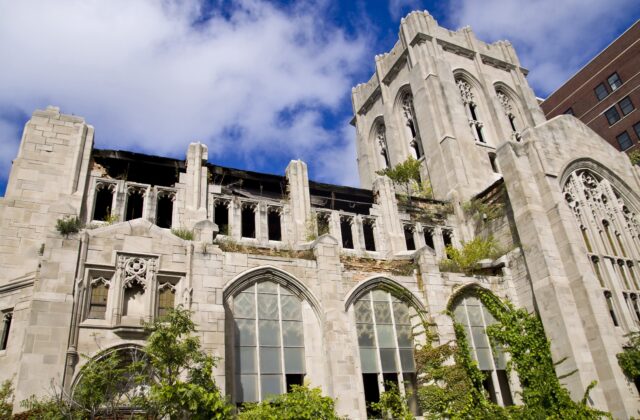
The City Methodist Church was constructed in 1926, a time when Gary was booming thanks to the steel industry. The church’s final cost was about $800,000, a staggering sum equivalent to more than $14 million today. Half of this amount was generously donated by the US Steel corporation, reflecting the church’s importance to the community. This financial backing allowed for the creation of a truly magnificent structure that would serve as a spiritual and social hub for the city’s residents.
The church was not just a place of worship but also a center for community activities. It housed a gymnasium, an auditorium, and numerous classrooms, making it a versatile space for various events and gatherings. The grand opening of the City Methodist Church was a momentous occasion, attended by dignitaries and celebrated by the entire community.
City Methodist Church was built in the English Gothic style
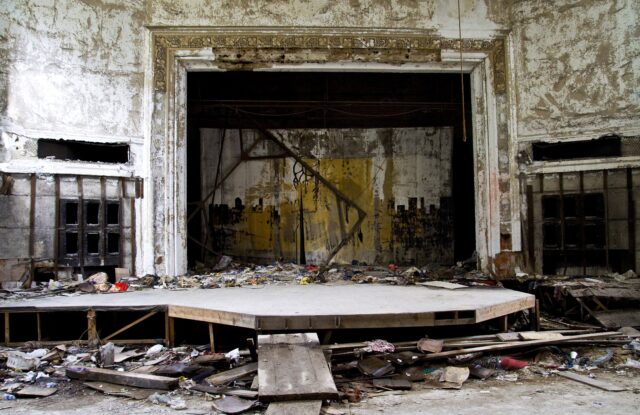
Designed in an English gothic style, the church is a nine-story marvel featuring ornate stonework, countless molded arches, towering pillars, and a plethora of stained glass windows. Although some windows were made of plain glass to cut costs, the overall effect was nothing short of breathtaking. The church looked as if it had been transported from historic England and placed in the middle of Indiana. Its architectural grandeur was a source of pride for the community, showcasing the craftsmanship and attention to detail that went into its construction.
The interior of the City Methodist Church was equally impressive, with intricate woodwork, vaulted ceilings, and a majestic pipe organ that filled the sanctuary with music. The church’s design aimed to inspire awe and reverence, creating a sacred space where congregants could find solace and spiritual upliftment. The English Gothic style, characterized by its verticality and elaborate ornamentation, made the City Methodist Church a standout architectural gem in the region.
The decline of the steel industry and its impact on the church
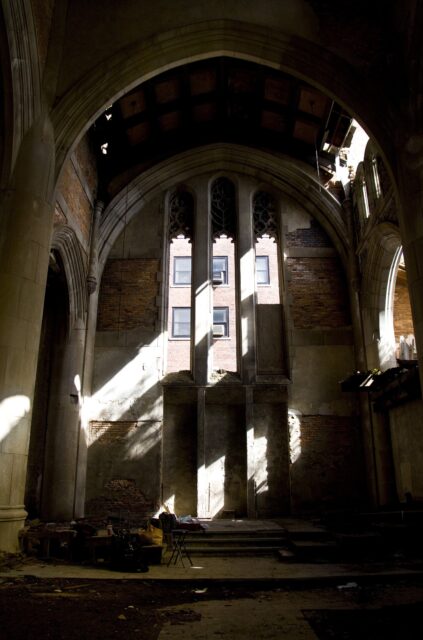
As the fortunes of the steel industry waned, so did those of Gary and its grand church. By the mid-1970s, the town’s population had dwindled significantly, and the church’s congregation had dropped to the low hundreds. Despite efforts to rent out space to the local university, maintaining such a massive structure became untenable. The economic downturn hit the community hard, leading to widespread unemployment and a decline in civic engagement.
The decline of the steel industry had a ripple effect on all aspects of life in Gary, including the City Methodist Church. The once-thriving congregation struggled to keep the doors open, and the church’s financial resources were stretched thin. The building, which had once been a symbol of prosperity, now stood as a stark reminder of the city’s economic challenges. Efforts to repurpose the space were met with limited success, and the church’s future became increasingly uncertain.
Its closure and abandonment in the 1970s
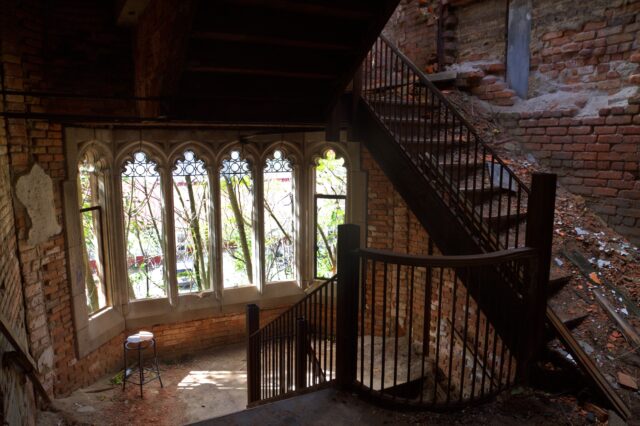
In 1975, the church was closed for good. The once-grand edifice quickly fell into disrepair, becoming a target for vandals. The beautiful stained glass windows were shattered, and the ornate stonework began to crumble. Yet, even in its ruined state, the church retained a haunting beauty that drew the attention of filmmakers and urban explorers alike. The closure marked the end of an era for the community, leaving a void that was felt by many.
The abandonment of the City Methodist Church was a significant loss for Gary. The building, which had once been a cornerstone of the community, now stood empty and neglected. Despite its dilapidated condition, the church continued to captivate the imagination of those who visited it. Its gothic architecture and decaying grandeur made it a compelling subject for photographers and artists, who sought to capture its eerie beauty and historical significance.
City Methodist Church has cultural significance
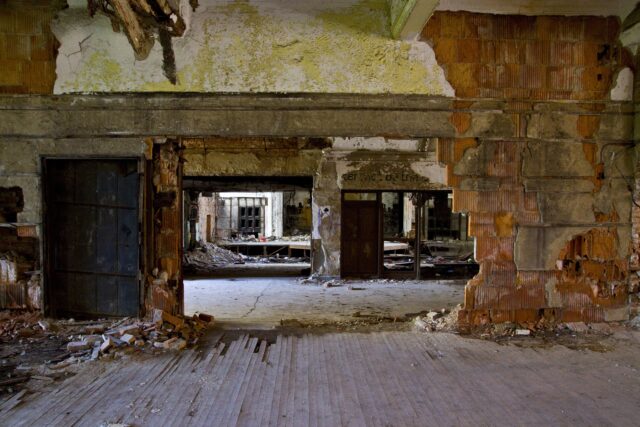
The City Methodist Church has served as a backdrop for multiple films, including A Nightmare on Elm Street and Transformers 3. Its crumbling walls and gothic arches provide a striking contrast to the modern world, making it a popular spot for photographers and adventurers. However, the structure is dangerously unstable in many places, adding an element of risk to any visit. The church’s cultural significance extends beyond its use as a film location; it has become a symbol of urban decay and resilience.
Urban explorers are drawn to the City Methodist Church for its unique blend of history and mystery. The building’s deteriorating condition adds to its allure, offering a glimpse into the past while challenging visitors to navigate its hazards. Despite the risks, the church remains a popular destination for those seeking to experience its haunting beauty firsthand. Its cultural impact is evident in the numerous photographs, documentaries, and articles that continue to be produced about this iconic structure.
Redevelopment efforts and challenges
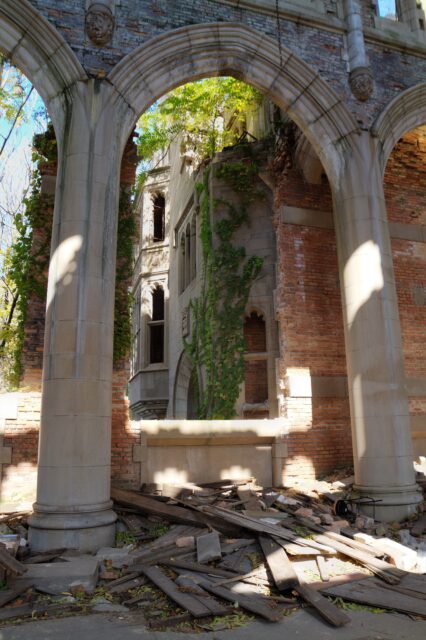
In June 2017, the Gary Redevelopment Commission received a $163,333 grant from the John S. and James L. Knight Foundation to transform the church into a “ruins garden,” complete with an amphitheater for weddings and receptions. This grant, awarded through the 2017 Knight Cities Challenge, marked the beginning of efforts to stabilize the structure. However, before any redevelopment could proceed, the city needed to address issues with flooding and asbestos.
The vision for the “ruins garden” aimed to create a unique space that would honor the church’s history while providing a venue for community events. The proposed amphitheater would serve as a gathering place for weddings, performances, and other celebrations, breathing new life into the old structure. However, the project faced significant hurdles, including the need to secure additional funding. The grant from the Knight Foundation was a crucial first step, but much work remained to be done.
Ongoing restoration and future prospects
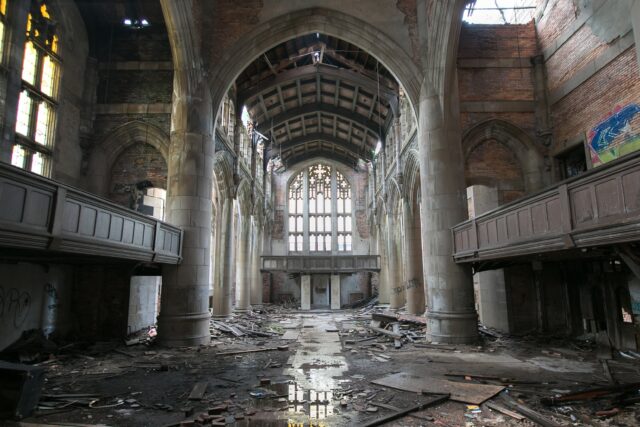
In 2019, the Northwest Indiana Regional Development Authority oversaw the $100,000 removal of asbestos from the church site. Despite this progress, much work remains to be done. In 2022, the city applied for a $400,000 Brownfields Cleanup grant from the U.S. Environmental Protection Agency. Unfortunately, the city was not among the grant recipients in 2023. Nevertheless, the community remains hopeful that future funding will help restore this iconic structure to some of its former glory. The ongoing restoration efforts reflect the community’s commitment to preserving its heritage and revitalizing the area.
More from us: Castle Acre Priory Was Abandoned Thanks To King Henry VIII
The City Methodist Church stands as a testament to the resilience of Gary, Indiana. While its walls may be crumbling, the spirit of the community remains strong, ever hopeful for a brighter future. The ongoing efforts to restore and repurpose the church reflect a broader commitment to revitalizing the city and preserving its rich history. As Gary continues to navigate its economic challenges, the City Methodist Church serves as a beacon of hope and a reminder of the enduring power of community.
